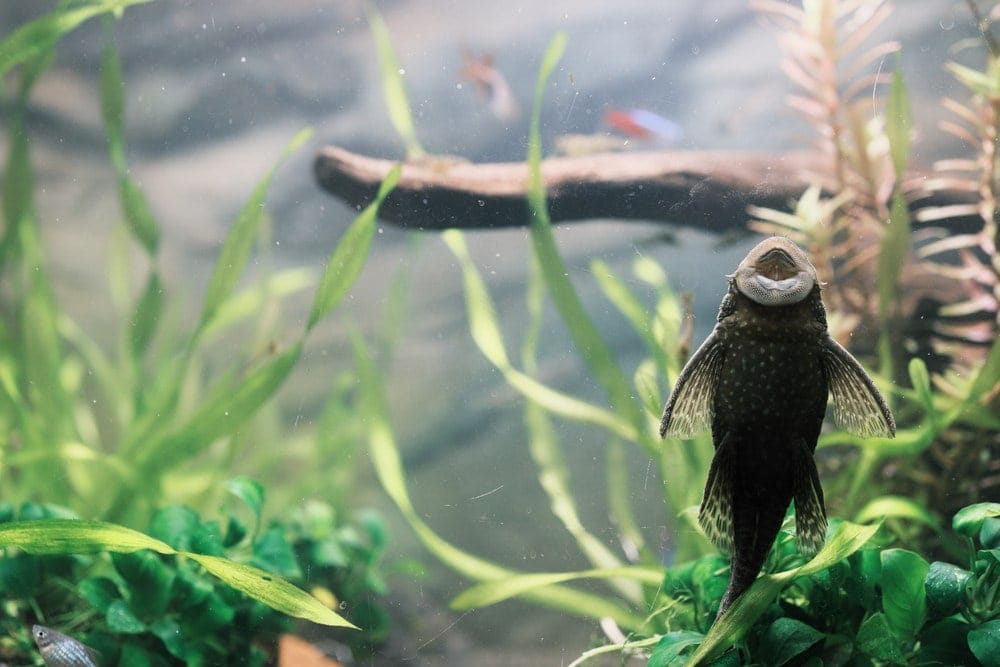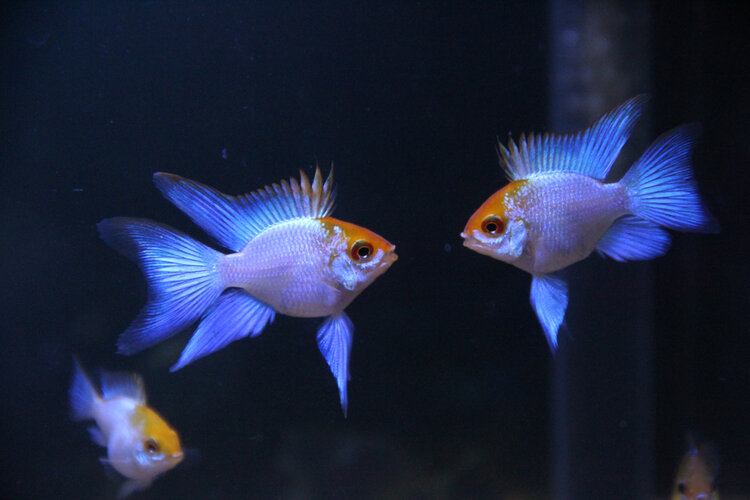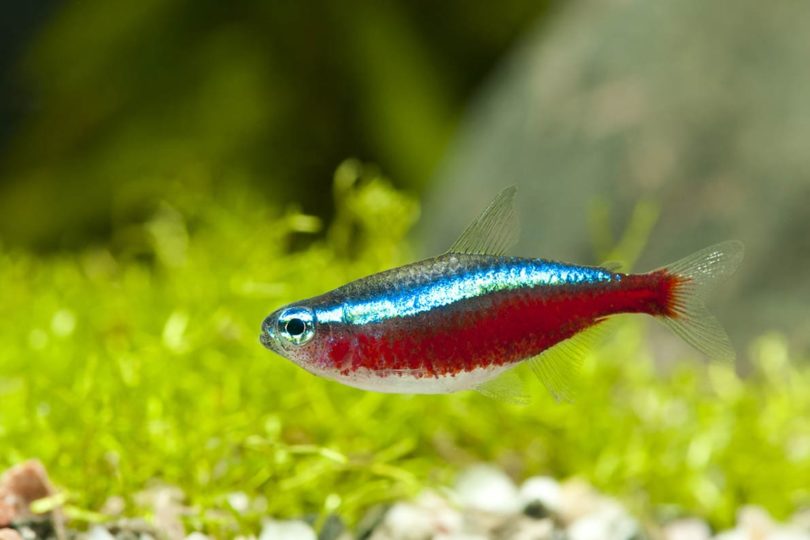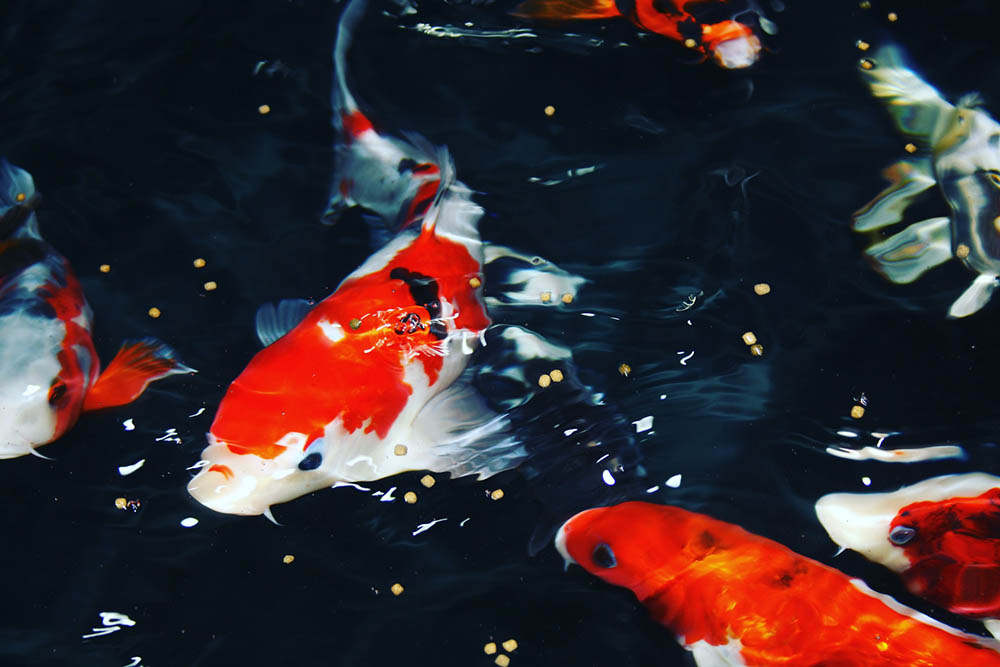Sucker Fish: Pictures, Size, Care, Tank Setup & More
Updated on
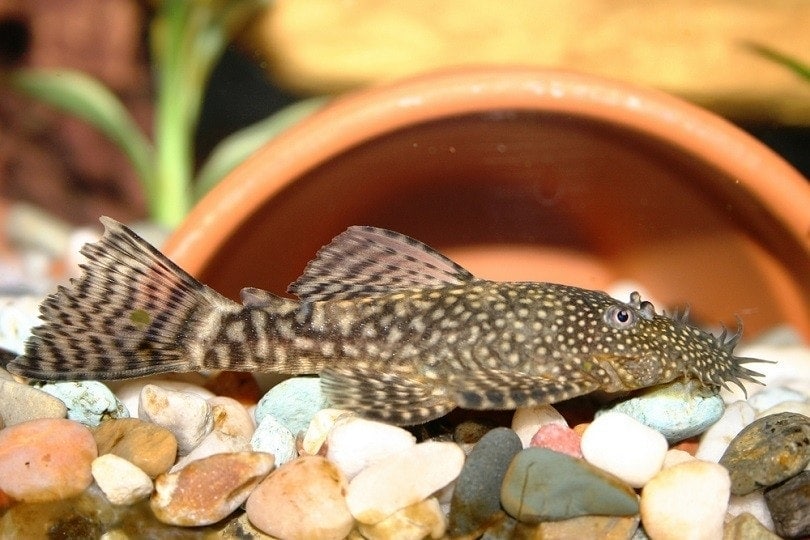
Click to Skip Ahead
Plecostomus, colloquially known as sucker fish, is a group of fish that are common in freshwater aquariums. While there are notable differences between different species of sucker fish, the care needs are very similar regardless of the fish. It should be noted that there are multiple types of fish that people refer to as “sucker fish,” but this article is specifically referencing the pleco species.
| Size: | Up to 24 inches long |
| Lifespan: | 10–15 years |
| Similar Breeds: | Catfish species, dwarf suckers, Siamese algae eater |
| Suitable for: | Freshwater community tanks |
| Temperament: | Social, generally peaceful |
Although Plecos are usually small in pet stores, some species can get very large. In fact, one of the most common sucker fish, the common pleco, can reach up to 2 feet in length. With proper care, these hardy fish can live a long life and they’re a fun and interesting addition to freshwater aquariums.
Sucker Breed Characteristics
Sucker Fish Cost
Sucker fish are extremely common fish, with the Common, bristlenose, zebra, gold nugget, and clown plecos being the most popular varieties you’ll find in home aquariums. They are actually a variety of bony catfish that are covered in armored plates instead of scales. These are native to South America, typically being found in fresh and brackish waterways in Brazil, Venezuela, Argentina, and Uruguay. They are common in their natural habitats, thanks to their hardiness. Unfortunately, they have also been introduced into non-native ecosystems at the hands of irresponsible fish owners, which has led to a serious invasive species problem in Florida.
Various species of Pleco are extremely easy to find in pet stores, with the common pleco being one of the easiest to find. Unfortunately, this is a great disservice to these fish because many people are unprepared for the large size these fish can reach.
Sociability of the Sucker Fish
Do These Fish Make Good Pets?
Yes, sucker fish make good pets. They are hardy fish that are social and active. They spend most of their time near the bottom of the tank, but it’s not uncommon to see them swimming around the tank. Younger sucker fish may spend time hiding, especially when they are new to their environment. They tend to be most active at night, but some can adjust to being active during the daytime.
Does This Fish Make a Good Tank Mate?
All species of pleco are usually quite peaceful fish. As they age, they may become territorial, especially toward other similar fish. Territorial behavior is much more likely in males than in females. Usually, these behaviors can be assuaged by providing plenty of space in the environment.

Care Guide & Tank Set Up
Water Quality, pH & Temperature
Sucker fish are tropical fish, so providing them with warm water is important. Maintain water temperature between 72–78°F through the use of an aquarium heater. They also do best in a relatively neutral pH, so maintain the pH between 6.5 and 7.5. Although they are hardy fish that can tolerate poor water quality better than many other fish, maintaining high water quality will help give your pleco a long life.
When it comes to the tank size needed for a sucker fish, it varies significantly between species. Due to their large size, common plecos often need tanks exceeding 75 gallons, with some experts recommending up to 500 gallons for a full-sized adult. Small sucker fish, like the zebra or bristlenose plecos, can happily live in tanks that are at least 20 gallons in size.
Substrate
Ideal substrates for sucker fish are those that lack jagged edges. These fish may damage their tender bellies on sharp edges. Smooth aquarium gravel and sand are great options. You may also consider smooth river rocks.
Plants
While plants are an excellent addition to your aquarium, plecos are known to uproot plants. They may also consume aquarium plants, although they tend to leave live plants alone if they’re getting enough to eat. Offering leafy greens, like romaine lettuce, for foraging may reduce the risk of your sucker fish eating the live plants in their tank.
Lighting
Normal day/night lighting is an important part of your tank setup for your sucker fish. However, since they are primarily nocturnal, they typically avoid bright lighting. Stick to moderate lighting at the brightest.
Filtration
Even small pleco species can create a large amount of waste, adding a heavy bioload to their environment. Proper filtration is an absolute necessity in maintaining good water quality and the health of your tank. The larger the sucker fish, the stronger your filtration should be. For large species, like the common pleco, you may need to invest in filtration that is rated for a tank higher than your tank, ensuring excellent filtration.
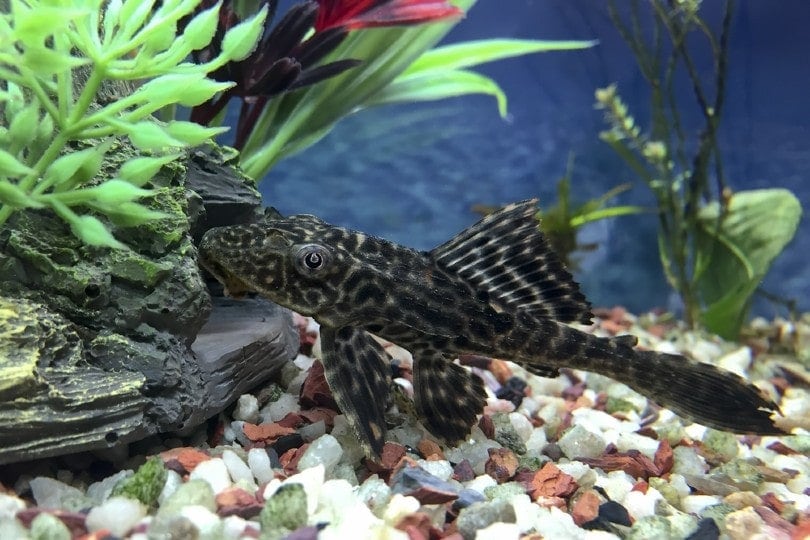
Things to Know When Owning a Sucker Fish
Food & Diet Requirements
It’s a common misconception that sucker fish can simply be added to an aquarium and will eat algae and detritus to survive. They need to be offered food. The diet can vary slightly between different species of pleco. Some are carnivores, some are herbivores or omnivores, and some almost exclusively consume wood. Research the dietary needs of the specific species of pleco you’re planning to bring home so you can be prepared.
Size & Growth Rate
Small sucker fish, like the bristlenose pleco, only reach around 6 inches in length, while the common pleco routinely exceeds 12 inches, sometimes reaching as long as 24 inches. They tend to grow somewhat rapidly, although it may take a couple of years for larger plecos to reach their full adult size.
Varieties
Common
The common pleco is the largest species often found in home aquariums. These fish can reach up to 24 inches in length, making them highly unsuitable for many home aquariums. They are typically brown, grey, or black with a lighter-colored belly. They also often have black speckles across their body.
Bristlenose
This smaller pleco species usually doesn’t exceed 6 inches in length. It’s named for the bushy appendages on the end of its snout, with these appendages being more pronounced in males. They have a dark base color that ranges from olive to black, but they are speckled with white or yellow speckles.
Zebra
This small pleco is covered in black and white stripes laterally down the body and across the head and neck. The zebra pleco rarely exceeds 4 inches in length, making it a great option for smaller tanks.
Clown
The clown pleco has a dark base color that is typically brown or black, and they are covered with brightly colored stripes of yellow and orange. This is another great option for a smaller tank since these fish only reach up to 4 inches in length.
Gold Nugget
The gold nugget pleco is a beautiful and eye-catching fish that has a base color of black or dark brown, but its body is covered in bright yellow polka dots with bright yellow strips of color along the edges of the tail and dorsal fins. This medium-sized sucker fish can reach up to 9 inches in length.
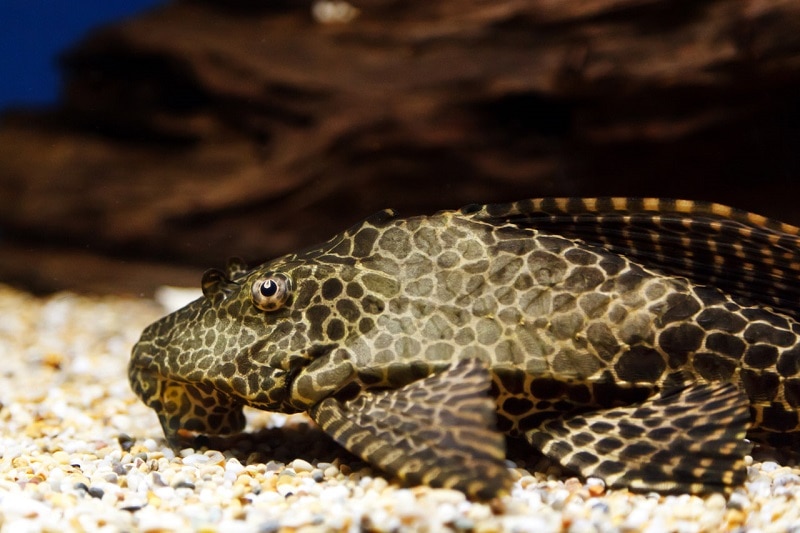
Lifespan and Health Conditions
Sucker fish are very hardy fish that are not overly susceptible to many health conditions. They can acquire the conditions that other aquarium fish get, including bacterial and fungal infections and parasites. However, their armored plating provides them with an extra level of protection that reduces their risk of some of these conditions. Regardless of their hardiness, you should always work to maintain high water quality.
Final Thoughts
Sucker fish are wonderful fish that make an excellent addition to tropical freshwater tanks. Some of them can get very large, though, and it’s not uncommon for males to become territorial as they age, so these fish should be selected with care and housed with tank mates that won’t cause problems. Because of their armored scales, they are hardy and healthy fish that can live long lives with appropriate care.
Featured Image Credit: Deborah Aronds, Shutterstock

